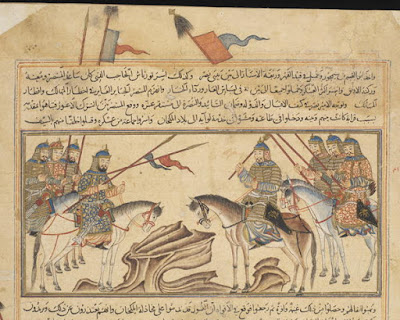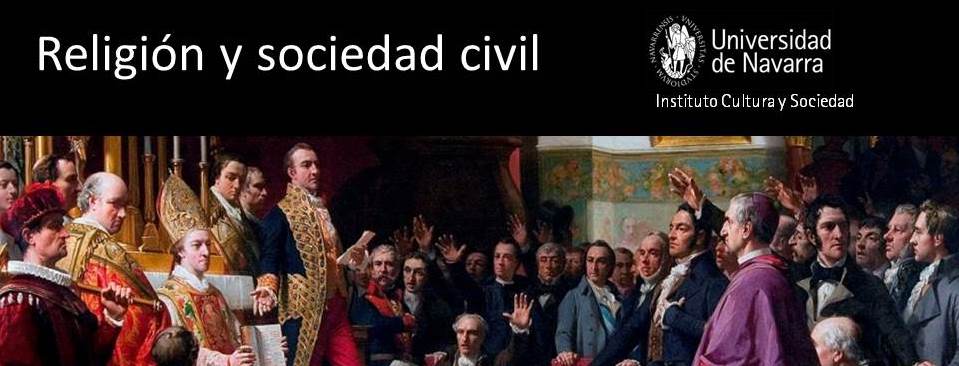The canonization process of Islamic religious violence started in the second half of the 8th century during the historical framing of a new Muslim-'Abbasid identity, 140 years later the Prophet Muhammad's death.
 |
| Islamic warfare: Isma'il Muntasir (d. 1005) in a battle |
Cacophonies about Islamic violence reached a so impactful trend to find inconsistencies among the same academic authorities on this subject; on the contrary, the impact of historical events, hermeneutical interpretations and political outcomes needed time to be absorbed, properly understood and make them comprehensible by the same intellectuals of their time. The violence in Islam is not the outcome of the ferocious actions of Muslims since Muhammad’s death in 632 AD; the Islamic canonization of violence is the consequence of a historical and hermeneutical process that mixed up Arabs warlike attitude, the religious and political milieu and the “narrative” that the following actors framed in portraying the same historical period.
Starting from the logical assumption that the existence of a new religion immediately after his Prophet’s death (632 AD) is improbable despite the requirements of historical periodization, the difficulties in defining as “Islamic” the violence usually attributed to the Arab conquering campaigns remained unlikely in particular concerning its quite complex scenario: a geography in which early Muslim believers remained a minority for at least two centuries and half after their Prophet’s passing.
The peculiar idea of this analysis is related in assuming a new different and updated viewpoint in considering the influence that Arab Christians confederation played in framing early Islamic warlike attitude, having played an important role as Christian foederati in battling against the Persians or the Byzantines since, at least, the 4th century.
It is evident that a first historiographic problem is connected with the same early Islamic narrative which emerged in the works of Ibn Ishaq (ca. d. 761/767), Abu Mikhnaf (d. 774), H. ibn al-Kalbi (d. 819), al-Waqidi (d. 823), Ibn Sa‘d (d. 845) al-Baladhuri (d. 892) until al-Tabari (d. 923) who were the firsts, in supporting the existence of an Islamic religious identity since Muhammad’s death. However, as F. Donner, R. Hoyland, M. Bonner and Th. Sizgorich have more recently emphasized, the early Islamic chronicles played a significant role in shaping a first Islamic narrative on the religious identity of the early Arab conquerors, but we probably need to wait 140 years (after 632) to consider an Islamic warfare moral and ethical attitude as well as the elaboration of the first juridical text on the argument: the famous Kitab al-Jihad, Kitab al-Siyar, Kitab al-Maghazi, in parallel, with the framing of an early empire border (Calasso/Lancioni, 2017).
The linguistic-hermeneutical coexistence and comprehension of the Futuh (conquests) and Ghazawat (raids) with the meaning of Qital (killing/fighting) and Jihad (struggling) is already a little bit problematic in relation to the Qur’an’s targeted figures: the Islamic revelation indeed, does not predict or approve any kind of conquering campaigns outside the Arabian Peninsula assuming on the contrary an accommodating favourable position on the Byzantine side against the Persians-Sasanians (Q. 30: 2-7) in the last Roman-Persian war (602-628). Therefore, if the conquests could still be understood in the anthropological Arab cultural milieu based on Ghazawat praxis, it is problematic to assume that these conquests were already rooted on the early sacralization of war in an Islamic perspective.
At the same time, the relevance in re-framing the famous “verses of the Sword” (II, 190-195, 217; IX, 5, 36-39; XXII, 39-41etc.) but also selected passages of the Qur’anic definition of religious Otherness (II, 142-150; V, 48, LXII, 9-11 etc.) through a historical-critical framework, it is particularly relevant in not giving credit to radical contemporary narratives. The presence of warlike bellicosity against the Arab polytheists of Mecca which reached the apex in the sura 9th for example, does not find in the same early Islamic historical narrative a praxis of such a violent impact: apart the little battles (for Ancient oriental standards) of Badr, Uhud, the Trench and Hunayn, Muhammad peacefully entrance in Mecca, annihilated de facto, the warmongering of the same revelation.
The historical evidence that war regimentation and its moral and ethical rules appeared in essays as the Kitab al-Jihad of A. Ibn al-Mubarak (d. 797), the Kitab al-Siyat al-Saghir of Muhammad ibn al-Hasan al-Shaybani (d. 803 or 805), the Kitab al-Siyar of Abu Ishaq al-Fazari (d. 802), or peculiar books of Hadith Collections as al-Muwatta of the Imam al-Malik (d.795) during the early ‘Abbasid period, seems at least indicative, that we need to wait the end of the early conquests phase, as the defenestration of the Umayyad dynasty (747-750), to contemplate the literary emergence of the Hegemonic topoi theme, as the early Islamic religious identification of Jihad, which can be hardly linked to a “normal” warlike attitude.
To attribute the meaning of Jihad to something univocally ascribable to war is erroneous; contrariwise, the mujahid, the one who put Jihad in praxis, is a warrior (not a terrorist) with higher moral standards (not killing women, children or elders, to not destroy the enemy goods and urban areas etc.), but also a believer whose actions are performed to ameliorate himself. Jihad is a de-contextualized individual struggle for reaching the believer perfectionism, not a banal form of religious violence.
Marco Demichelis
ICS, Universidad de Navarra
